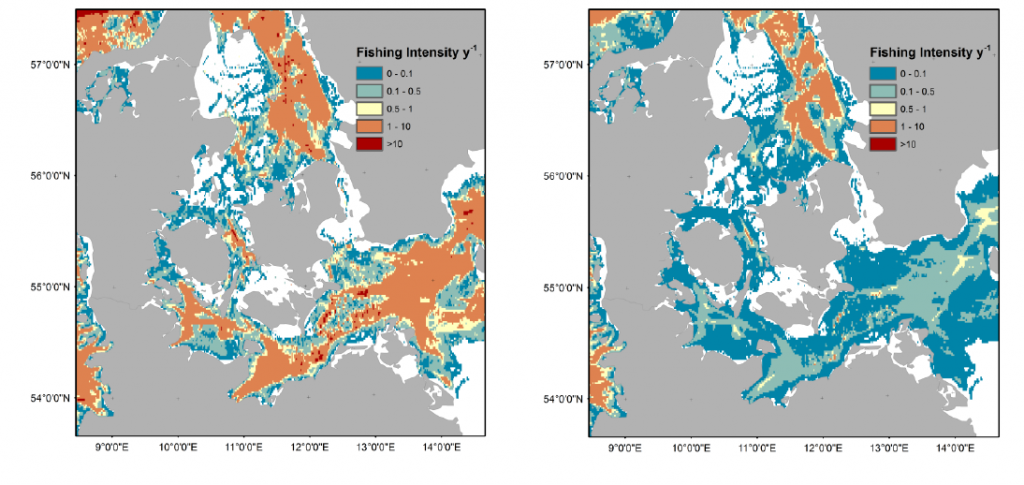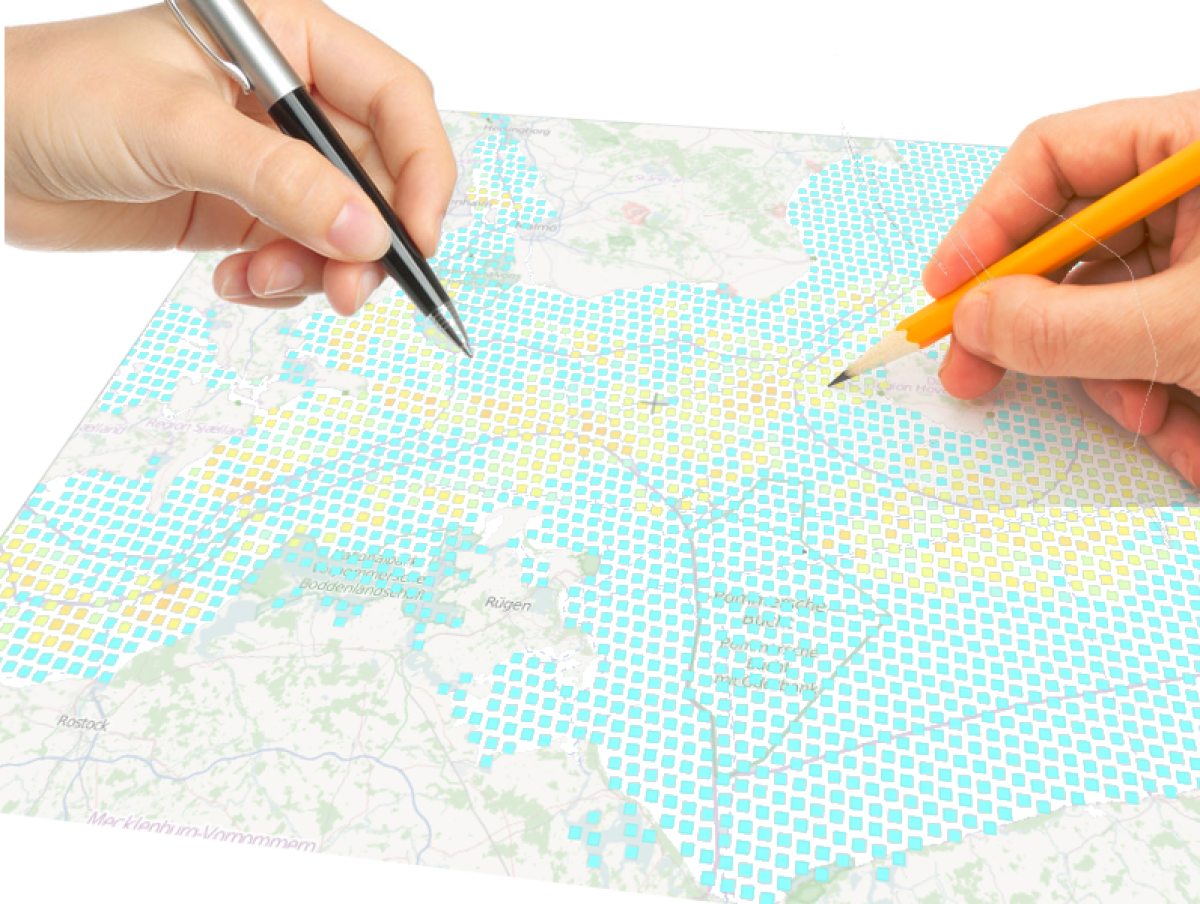Multi-sectoral and multi-disciplinary marine spatial planning methods are prevailing in the EU Marine Strategy Framework Directive. Such integrated marine management needs to consider the commercial fishery and all other sector uses of the sea, such as transport, energy exploitation and recreational use.
Consequently, each of these pressures on the marine ecosystem needs to be mapped.
 Annual average fishing intensity (2010-2012) at the surface level (left; sediment abrasion < 2cm) and subsurface level (right; abrasion ≥ 2 cm) for all bottom contacting gears from Denmark, Sweden and Germany. (Source: here)
Annual average fishing intensity (2010-2012) at the surface level (left; sediment abrasion < 2cm) and subsurface level (right; abrasion ≥ 2 cm) for all bottom contacting gears from Denmark, Sweden and Germany. (Source: here)
Simultaneously, the EU Common Fisheries Policy recently recognized the importance of accounting for heterogeneity in fishing practices from different fleets for managing
commercial fisheries. It was acknowledged that a shift should take place from managing individual fish stocks towards managing fleets, mixed fisheries, and economic issues.
Fine-grained VMS data enable obvious improvements to describe used areas and spatial fishing pressure with higher resolution than the ICES rectangles. Hence, the linkage of VMS with logbooks constitutes very valuable information for mapping the spatiotemporal heterogeneity of landings and economically important fishing grounds to act as the basis for management decisions and designation of priorities areas.
 These maps can be used directly for conditioning the DISPLACE model and inform area-based management performing strategy evaluation and scenario modelling of different management options associated with, for example, the establishment of spatial regulated areas and displacement of fishing effort in relation to ecosystem conditions (sensitive habitats), variability in fish stock occurrence and other uses of the sea.
These maps can be used directly for conditioning the DISPLACE model and inform area-based management performing strategy evaluation and scenario modelling of different management options associated with, for example, the establishment of spatial regulated areas and displacement of fishing effort in relation to ecosystem conditions (sensitive habitats), variability in fish stock occurrence and other uses of the sea.

